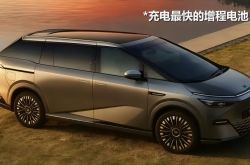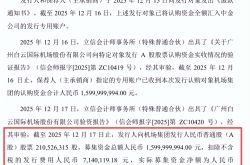Apple and Huawei, both fallen into the "innovation trap"?
![]() 09/12 2024
09/12 2024
![]() 636
636
Recently, the two leading smartphone manufacturers have successively launched new products. Apple launched its latest iPhone 16 series on September 9 local time, while Huawei released the world's first triple-folding screen phone, named Mate XT Extraordinary Master, on October 10.
The two brands are facing off directly, with comparable levels of popularity. Judging from the pre-orders, the number of pre-orders for iPhone 16 on a single platform has exceeded one million, while the number of pre-orders for Huawei Mate XT Extraordinary Master on Huawei Mall has also surpassed 4 million.
However, the premium level often better reflects the popularity of smartphones. According to second-hand trading platforms, the premium for the iPhone 16 series is around RMB 1,000, while the official price of Mate XT Extraordinary Master, which is around RMB 20,000, has been scalped to RMB 50,000-70,000 by resellers.
Of course, scalpers tend to focus more on the scarcity and business opportunities behind the products. The iPhone 16 is unlikely to be out of stock, whereas Mate XT Extraordinary Master generates more buzz.
This also indicates that the smartphone industry has not seen a major breakthrough in a long time, which has prompted scalpers to go crazy over Mate XT Extraordinary Master. But have Apple and Huawei truly brought enough "innovation" this time around?
1. Apple encounters a cold reception, while Huawei explodes in popularity
Although Apple and Huawei launched their new products close to each other, their selling points are quite different. Apple emphasizes AI breakthroughs, with CEO Tim Cook even stating that the new iPhone 16 is designed for AI, marking the beginning of a new era.

In June this year, Apple launched Apple Intelligence, a generative AI that serves iPhone, iPad, and Mac, featuring advanced language understanding and creation capabilities, including smart writing and image generation. It can be seen as a smarter Siri and a more advanced intelligent assistant.

The innovation of iPhone 16 is more about hardware upgrades based on Apple Intelligence, such as equipping it with a custom 3nm process chip designed for AI. The official claims that the 16-core neural network engine of A18 is optimized for large generative models, resulting in up to twice the speed of machine learning models compared to A16.
In addition, iPhone 16 has some "minor innovations" seen in previous generations of Apple phones, such as replacing the long-used mute toggle with a customizable button and adding a new camera control button on the right side of the device.
However, the capital market does not seem enthusiastic about iPhone 16. After the new product launch, Apple's US stock price even fell by 1.43% before the market opened. Elon Musk even responded to netizens' complaints on X, implying that Apple spent RMB 50 billion but lacked innovation in its new products.

Apple once again staged a "squeezing toothpaste" style product launch, and AI failed to become a highlight. The mainstream market view is that the commercial prospects of AI are still to be confirmed, and the rapid iteration of AI means that R&D investment will continue to increase, leaving many uncertainties about whether it will be beneficial or detrimental to the company's profitability.
Moreover, Apple Intelligence's Chinese language support is estimated to be available in 2025, and the current mainland version does not support Apple AI, leading to domestic consumers' indifference towards it.
Of course, compared to concerns about Apple's profitability, the market is more disappointed by the lack of disruptive innovations in its new products, especially since Apple once brought the industry the "iPhone moment."
In contrast, Huawei emphasizes the "leading, innovative, and disruptive" nature of its triple-folding screen phone. While many manufacturers have showcased triple-folding screen concepts, Huawei is the only one to successfully mass-produce and launch such a product.
The innovation of Huawei Mate XT Extraordinary Master lies not only in its "triple folding" but also in achieving an ultra-thin and lightweight design based on this feature. This includes hinge technology that allows the folding screen to fold smoothly and seamlessly. Huawei employs the innovative Tiangong hinge system and multi-directional bending flexible materials that affect screen quality.
In addition, Huawei Mate XT Extraordinary Master also incorporates AI functions such as AI summarization and AI translation, and boasts top-notch camera and battery performance.
2. Innovating for the sake of innovating?
It is evident that while Apple and Huawei focus on different aspects, they have both created numerous selling points for their new products. However, these selling points do not necessarily translate into "highlights."
Whether it's Apple's Apple Intelligence or Huawei's triple-folding screen, such innovations are not necessarily essential for consumers. They do not change the current rules of the smartphone game or disrupt consumer usage patterns.
As a result, many consumers may long for the glory days of the iPhone 3, the first all-touch smartphone with internet technology, which led the mobile phone industry by at least five years.
Since then, Apple's innovations have slowed down. The last impressive iPhone, arguably the iPhone X seven years ago, eliminated the home button in favor of a notched screen. Since then, Apple has pursued a "small but steady" strategy, introducing incremental updates each year.
The entire smartphone industry shares a similar pain point, with the last collective innovation dating back to 2018. In addition to the birth of the iPhone X, major manufacturers also introduced their full-screen phones, utilizing sliding covers, folding screens, curved screens, punch-hole designs, and other methods to increase screen-to-body ratios, creating a flourishing market.

However, since then, the smartphone industry has struggled to introduce breakthrough updates, with most focusing on minor innovations in areas such as cameras, batteries, 5G, and high frame rates.
Even Huawei Mate XT Extraordinary Master, despite its significant technical breakthrough in triple-folding screens, does not offer a fresh concept as folding screens are no longer novel. Moreover, the target audience for triple-folding screens is relatively niche, and the extra-large folding screen is not a rigid demand for average consumers.
Such incremental iterations resemble "garbage time" in sports, neither turning the tide nor ending the game but merely boring the audience. In reality, Apple is not the only brand stuck in "garbage time," nor is the smartphone industry the only sector affected.
For instance, in the mobile internet industry, exciting new platforms or models like Douyin (TikTok) and Pinduoduo have emerged nearly a decade ago.
In comparison, innovations that truly excite the masses can be traced back to the emergence of e-commerce platforms like Taobao, which facilitated online shopping, or the rise of "thousand-group battles," enabling O2O convenience for consumers.
In fact, the slowdown in innovation across society is closely related to the economic development cycle. With the current slowdown in socio-economic growth and sluggish consumer demand, businesses face greater operational pressures, and the R&D cycles of technology companies have been significantly compressed.
Taking new energy vehicles as an example, the traditional cycle for gasoline-powered vehicles was "one revision per year, major revision every three years, and generation change every five years." However, the iteration cycle for new energy vehicles has been compressed to only 12-15 months. If companies cannot continuously launch new products, they can only stimulate the market through price wars, which can put them on the defensive and erode their profitability.
Against this backdrop, even top-tier technology companies find it difficult to focus on R&D, often innovating for the sake of innovating. This includes the booming AI industry, which has evolved rapidly over the past two years, progressing from general AI models to vertical applications and finally to AI entities, yet the industry has yet to find a clear profitable business model.
3. Domestic brands strive for high-end markets
At this stage, businesses are increasingly focused on "artificially creating innovations." Even if they cannot disrupt the industry, they can still generate buzz in the market, making the innovation battle akin to a marketing battle.
Therefore, as more and more industries focus on "price wars," Huawei's breakthrough brings new ideas to the industry. By driving product quality breakthroughs through innovation, Huawei can escape the shackles of price wars, accelerate brand development upwards, and generate more brand premiums.
Canalys data shows that in the second quarter of this year, the top five vendors in the global high-end smartphone market, ranked by shipments, were Apple, Samsung, Huawei, Xiaomi, and vivo. While Apple remains the market leader, Huawei is catching up with an 80% market growth rate.

In China's high-end market, while Apple leads with a 52% market share, its gap with Huawei is narrowing, with Huawei reaching a 30% market share in the second quarter.
Huawei executive Yu Chengdong has publicly expressed his views on price wars in the automotive industry, stating that Huawei will not participate in low-price competition but will focus more on product value, reflecting Huawei's core value of innovation across different fields.
Looking at Huawei's innovations since its smartphone comeback, such as 5G phones, self-developed chips, and satellite calls, while they may not immediately impress users at the application level, they have led the domestic mobile phone industry forward and increased investment in R&D in areas like chips and AI. Other brands like vivo and OPPO have also followed suit with their self-developed chips and camera technologies like OnePlus' Hasselblad camera system.

Admittedly, the current innovations of smartphone manufacturers are not enough to usher in another "iPhone moment," but they have not deviated from innovation. More importantly, they have given domestic phone brands the confidence to compete in the high-end market.
For instance, OnePlus' latest flagship, the OnePlus 13, features Qualcomm's fourth-generation Snapdragon 8 flagship chip and Hasselblad imaging system, with a predicted starting price of RMB 4,500-5,000. The OPPO Find X7 Ultra Satellite Communication Edition starts at a whopping RMB 7,499 and is equipped with OPPO's self-developed Tidal Architecture, ensuring smooth experiences with daily apps like Gaode Maps and Weibo.
As the socio-economy enters a period of low-speed development, most industries anticipate the next technological breakthrough but must endure "garbage time." For businesses, this is not a time to pause but to further enhance their internal capabilities and expand their competitive advantages.
From Huawei, we can see the potential for "conquest." According to Counterpoint data, thanks to the popularity of Huawei's flagship products, HarmonyOS surpassed iOS for the first time in the Chinese market in the first quarter of 2024, becoming the second-largest operating system in the market.
Amid the global economic winter, Chinese brands should carry a "torch," refusing to engage in low-quality price wars and instead leveraging innovative strength to reach the world stage, "lighting the way" for Chinese industries to go global.





